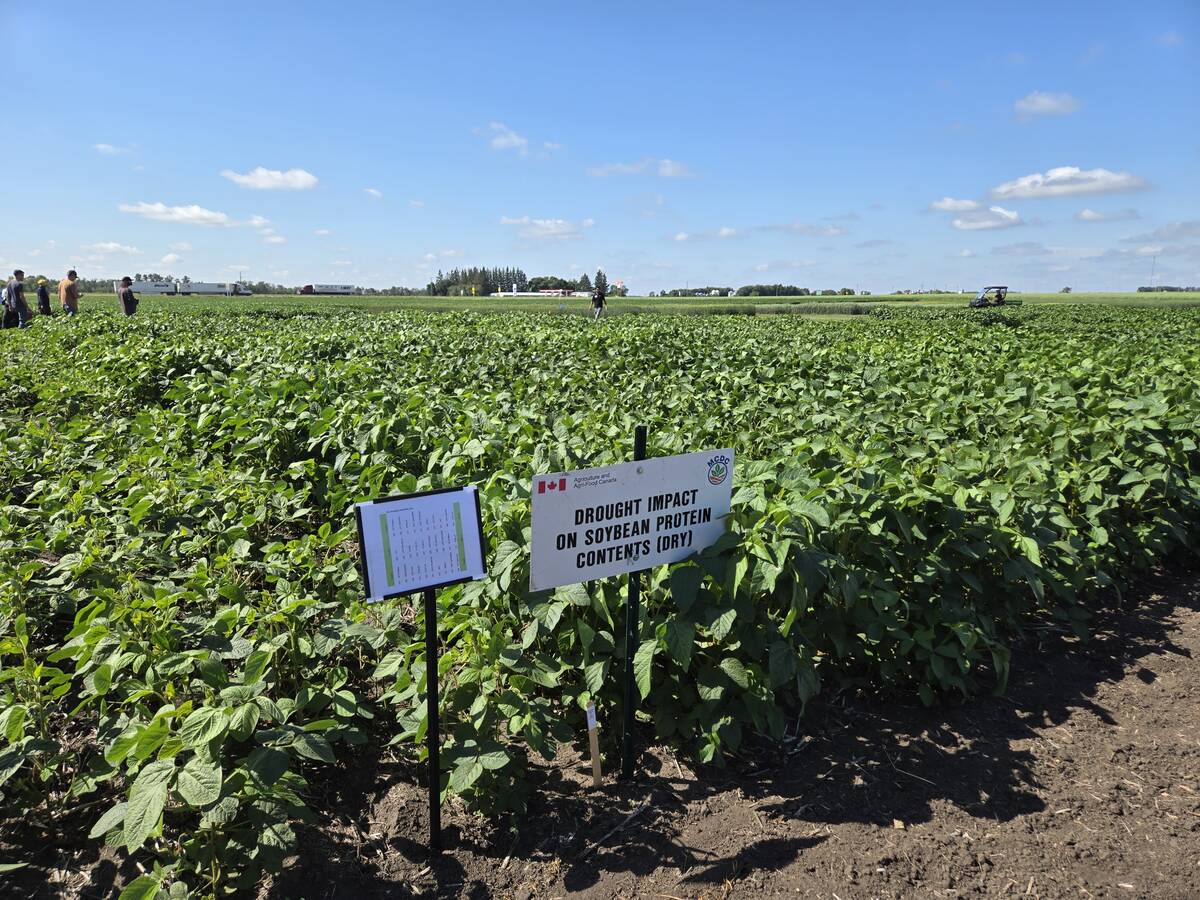Katherine Buckley says composting manure can be as much an art as a science.
Still, it’s helpful to understand the science behind composting and Buckley is among those in Western Canada leading that effort.
She’s a research scientist at Agriculture Canada’s research centre in Brandon, where the study of manure composting, specifically cattle manure, has been ongoing since 1999. Roughly 10,000 to 11,000 tonnes of manure and bedding materials are composted there each year.
Guidelines have emerged from those studies that can help make composting an art backed by knowledge gained through science.
Read Also

Carberry field day looks for agriculture solutions
Manitoba farmers explored research solutions for resilient crops, perpetual agronomic issues and new kinds of agricultural products at a field day at the Manitoba Crop Diversification Centre in Carberry on Aug. 6.
Composting is driven by microorganisms that consume oxygen and generate heat while breaking down manure and straw into a humus-like material.
Because the tiny organisms thrive on oxygen, Buckley said air and moisture are two of the most important things to consider when composting.
“If you follow the basic rules of moisture and aeration, you’re going to be successful.”
A compost pile or windrow that gets too wet can collapse, cutting off the bacteria’s supply of air. The pile could then cool or undergo anaerobic fermentation, which tends to result in unwanted odours.
Ideally, according to Buckley, compost’s moisture content should be 50 to 60 percent.
During bouts of dry weather, that could mean adding water to the composting piles or windrows. In wet weather, turning the piles may be necessary to keep them aerated.
Depending on the size of the composting piles, farm equipment such as a front-end loader might be able to do the job, but it may be more efficient to use a compost turner when working with longer windrows. There are commercial compost turners, but farmers are also building their own.
“If you have more material than your equipment can handle, then you’re doomed to failure or you’ll have lower quality compost,” Buckley said in a presentation at Manitoba Ag Days in Brandon in mid-January.
Attention required
As a general rule, Buckley said the compost should be turned once a week for the first four weeks, then once every two weeks for the next two months, followed by a couple of times after that.
The number of turns will be influenced by climate and the speed of decomposition.
In background information presented at Ag Days, she said manure can easily be composted from May to August and then applied to fields in the fall or piled for curing and applied in the spring.
The material becomes relatively stable and useful after 12 to 13 weeks of active composting.
There are a number of benefits to composting solid livestock manure, Buckley said.
For example, the heat generated, particularly in the earlier stages of composting, can destroy potentially harmful pathogens in the manure such as E. coli, salmonella and fecal coliforms.
Composting can also build better relationships with neighbours by reducing odours and flies associated with unmanaged manure piles.
As well, properly composted manure can provide a source of slow-release nitrogen for crops and can reduce nitrogen leaching problems in fields.
However, composting and compost must be managed wisely.
The composting site needs to be properly located and designed to prevent runoff. As well, knowing how much nitrogen will be released to a crop from the organic material is still not an exact science.
Buckley said a rough guide is that 20 percent of the nitrogen in the compost will be available to the crop in the first year.
Producers need to be sure they don’t over-apply the composted manure, since there can be a risk of phosphorus accumulation in the soil.
She also sees opportunities emerging to sell compost for soil remediation, either where erosion has taken place or where soil has been contaminated, such as at oil or gas well sites.














